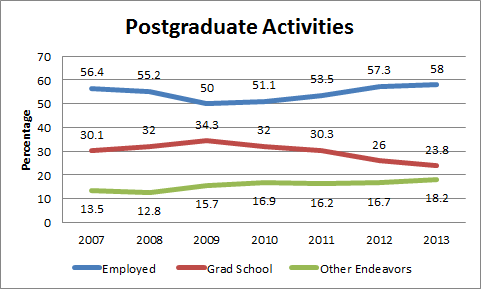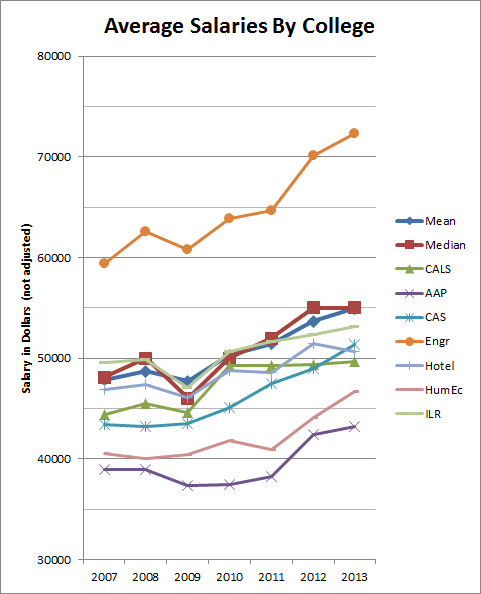
During my four years at Cornell, dogs were something of a rarity. I knew a couple of grad students who had dogs, and a couple of fraternities with house dogs, and that was about it. A member of my chapter tried to push a proposal through our alumni Corporation Board to permit the adoption of a house dog, but the board declined, citing concerns about liability (and given the possibility of someone being bitten at a party or something, I didn’t disagree with their decision).
Before the 1950s, dogs were far more ubiquitous. For one, the Vet School was located where ILR is today, and then-president Mallott cited the incessant animal noises, including barking dogs, as one reason to move out of the A.D. White House at the start of the 1950s (Altschuler and Kramnick 36; I wager that the student riot in front of his house in 1958 reaffirmed his off-campus preferences). But even outside of the kennels and vet offices (dogs weren’t allowed in lecture halls in the vet school), dogs were accepted and even welcome on the quads, in academic buildings, libraries and even cafeterias. Some thought it was the result of an alumni donation with a stipulation to allow roaming digs free rein of the quads.
But the hospitality towards canine companions was fading. In 1948, they were banned from the Willard Straight cafeteria, and the following year, the Cornell Sun waged a campaign to have rowdy rovers removed from campus Libraries. In 1953, Malott (what is with this man hating on dogs?) had Fido banned from the graduation ceremony. By December 1959, dogs were banned from all campus buildings aside from the Vet School. The reasons for banning dogs were fair enough; dog fights, interrupting a symposium on segregation, destroying books; but some students and faculty still mourned the disappearance of canines from the classroom. One misogynistic professor told the Sun in 1959 he “surveys the situation before each class and throws out any wild puppies. Dogs are like co-eds knitting. I’m willing to put up with them if they stay quiet. Who knows? Like the co-eds, they might learn something.”
A special focus of the anti-dog sentiment was on a 5-year old, three-legged husky named “Tripod”, who became a sort of quad-wandering unofficial campus mascot in the mid and late 1950s. “Tripod” had three legs as the result of a car accident in November 1953, from which “he hovered for many weeks between life and death“, and his back left leg was paralyzed and later had to be amputated. Officially, he was the house dog of Kappa Delta Rho (KDR) and named Chinook, but like many dogs, wandered campus at his whim. However, Tripod chased a cat to death and was reported to have snapped at students. Eyewitness reports to the Sun claim he was chasing the cat when it ran into the path of a patrolling campus police car, but the police report suggests he mangled the cat, which then crawled under the car. The Sun was not inclined to believe them. His former owner (Roger Burggraf ’56) claimed him, and once his army tour was completed in Spring 1959, said he would return the husky to Alaska. Tripod had a fraternity-hosted feast in his honor on October 17, 1958, and while it’s not stated whatever happened after he was picked up by his owner the next day, I hope that he lived out some happy days in the last frontier. His now 82-year old owner did return to Alaska, worked as a dog trainer, and was awarded Alaskan of the Year a few days ago, so I have every reason to be optimistic.
The removal of dogs took a pause during the 1960s, when civil unrest was the forefront of concerns and soft-hearted professors didn’t care to raise a complaint to the occasional four-legged attendee. Dogs could still walk untethered on campus outside of buildings. But after a large ill-tempered dog bit four students during a chemistry exam in 1973, (AK 233), the university started enforcing a 1971 rule requiring all dogs on campus be leashed (although I don’t think a 1972 recommendation for mandatory dog registration was approved). Tompkins County followed suit in 1980.
Gone are the days of dogs frolicking free on Cornell’s campus. Legally, anyway.

[1] Altschuler, Glenn C. and Issac Kramnick. Cornell: A History, 1940-2015. Ithaca: Cornell University Press, 2014. Print.









































